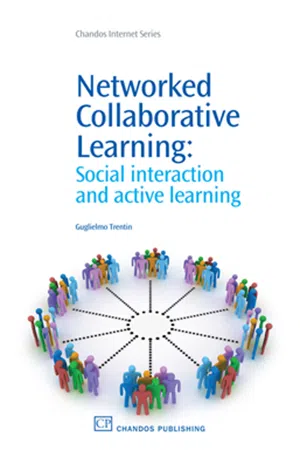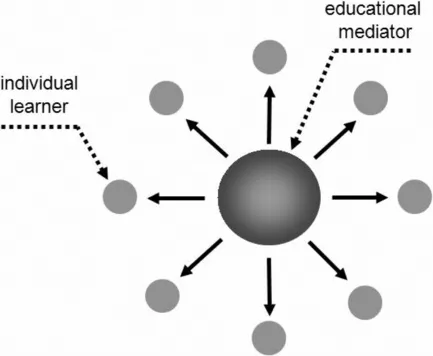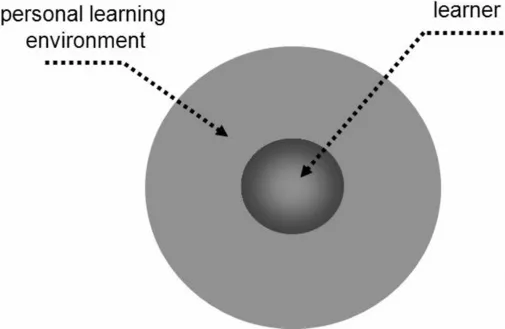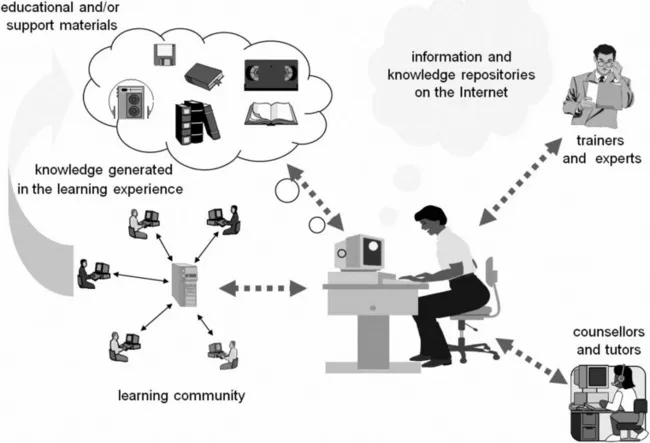Educational uses of ICT
The use of ICT for supporting learning/teaching processes is in constant evolution. In recent decades a number of different approaches have been studied, developed and tested. Among the most prominent of these are the use of specific software for computer-aided learning (CAL) (Shamsuar, 2008), large-scale network distribution of structured educational contents for self-directed learning (Garrison, 2003) and virtual learning environments for nurturing learning communities that can be either ‘formal’ (within distance-learning courses) or ‘informal’ (within online communities of practice) (Wenger et al., 2002; Cross, 2005; Trentin, 2005).
This undeniably intricate field can be disorienting, thanks in no small part to the casual (if not downright improper) use of terminology that is becoming ever more prevalent. The problem here lies in the overlap of two key areas: learning processes on the one hand and technology on the other.
Given the considerable scope of the TEL field, we need to identify a set of firm reference points that can help clarify the peculiarities and conditions of applicability/sustainability of different TEL approaches. In line with the aims of the book, these reference points will relate in particular to network-based approaches.
From mediator-centred to user-centred approaches
Over time there has been a steady shift in the way the educational use of ICT has been approached (Collins and Van der Wende, 2002; Howell et al., 2004). The early tendency was to attribute the leading role in learning/teaching processes to the technology (Figure 1.1), for example in the delivery of pre-set material to all learners via a single mode, irrespective of different learning styles, needs etc.
Figure 1.1 Centrality of the educational mediator
While this propensity to attribute a key role to the educational mediator1 (Trentin, 2002) is still fairly common, there has recently been a general tendency to position the learner closer to the centre of teaching/learning processes, thanks in part to the emergence of new technological affordances (Figure 1.2).
Figure 1.2 Centrality of the learner
This had led to the idea of building a personalised learning environment (PLE) (Attwell, 2007) around the learner that integrates a range of learning resources (Figure 1.3), making it possible to:
Figure 1.3 Personal learning environment
access specific digital learning contents
seek support from a course tutor/counsellor about how to use the educational resources available
interact online with instructors and experts/specialists in the field, in other words with those whose experience can help the learner use the learning material provided
become part of a networked learning community comprising all those involved in the same educational experience
access material from previous runs of the course, especially outputs from problem-solving or case-based activities, two activity types that tend to generate a trail of documents and artefacts which are potentially useful for participants in later editions.
This vision of TEL integrates a range of different approaches which we will later attempt to categorise. Before doing so, however, a basic premise ought to be made.
TEL: ‘when’ it’s needed and ‘whether’ it’s needed at all
The decision to adopt technology for pursuing specific educational goals must take very careful account of the added value that can effectively be gained in teaching/learning processes. This concept is a cornerstone of the educational technology field: the use of ICT should only be considered when it can guarantee real added value in educational terms and open the way to learning activities that otherwise could not be enacted using traditional tools and approaches.
But when is TEL actually appropriate? Some examples are when the learning material:
has a hypertext structure
uses multiple communication codes, some (or all) of which are dynamic (audio, video, animation, etc.)
is adaptive in nature, i.e. it adapts to the needs and learning style of the user (
Ketamo and Multisilta, 2003)
is based on learning strategies that are not overly directive, in other words that leave considerable space for user initiative (e.g. simulation software, microworlds, games, etc.).
TEL can also be used in cases where the most effective strategy for reaching a given objective is collaborative learning (local groups working at a computer or remote groups working in a virtual space).
In this sense we can say that the factor determining educational sustainability is effective exploitation of technology’s intrinsic potential to enrich and enhance the individ...












